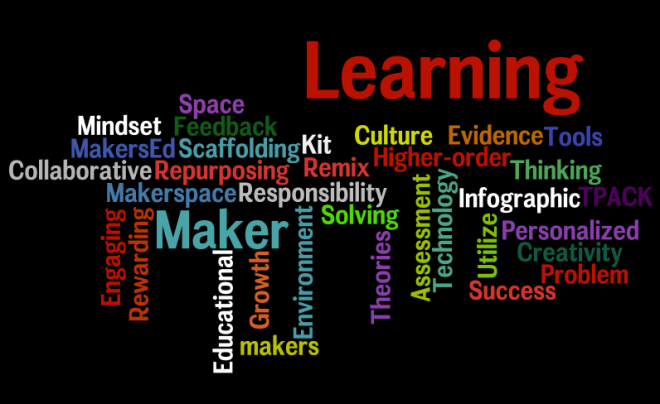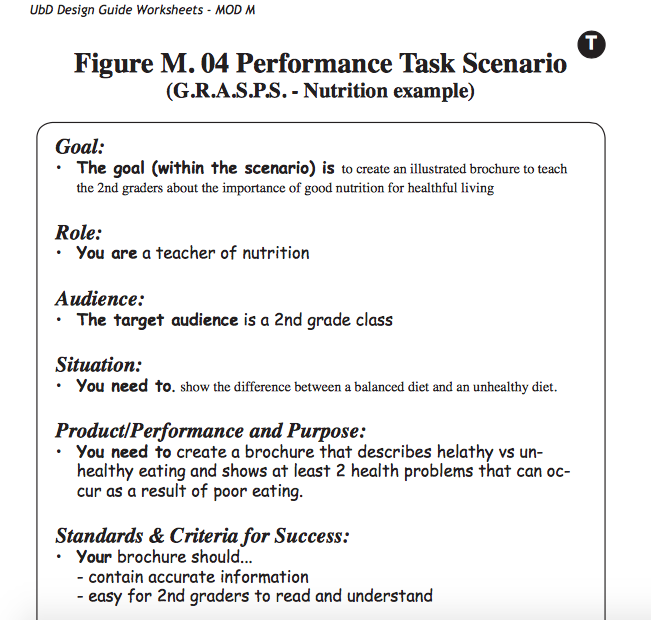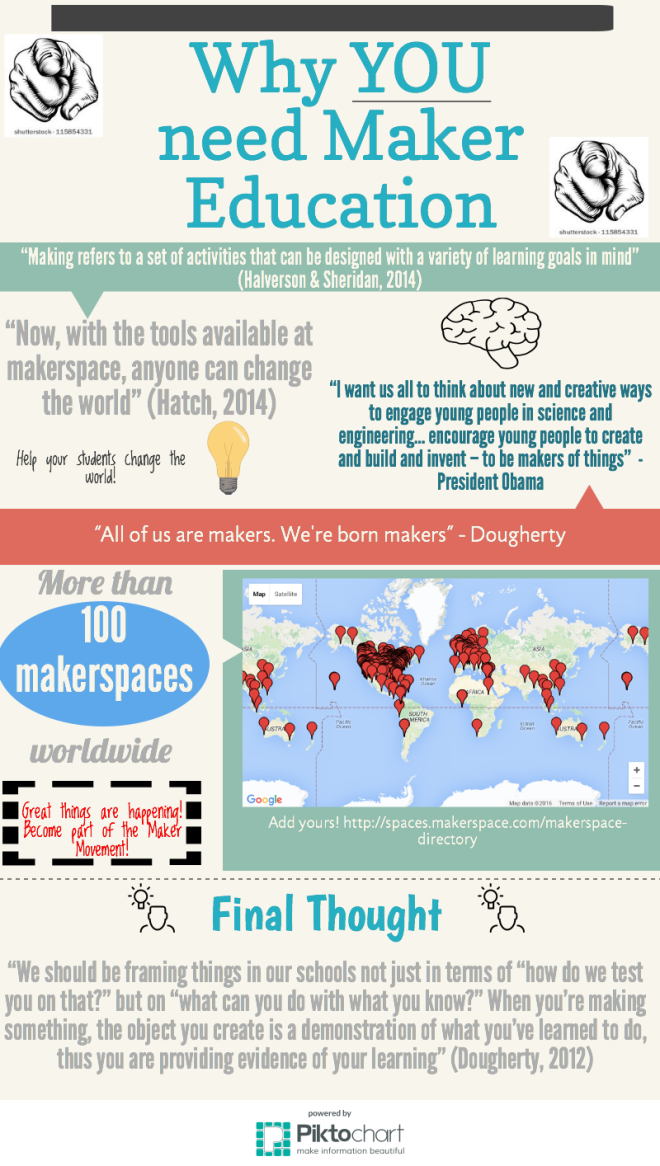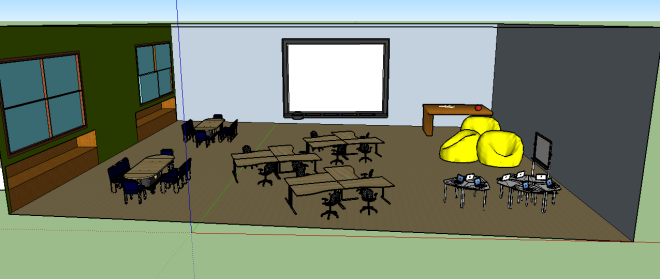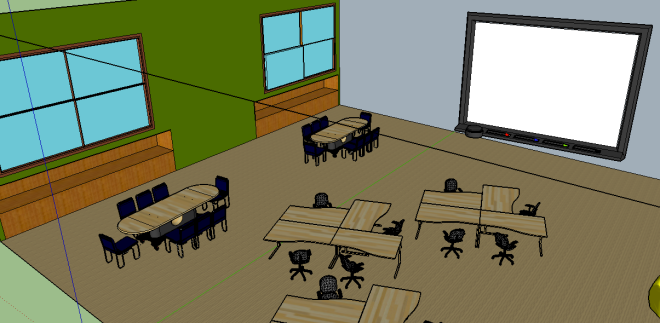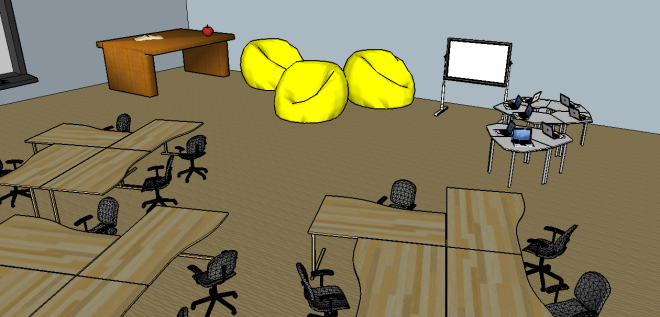As an educator, I frequently hear about learning theories. Powerful buzzwords like personalized learning, collaborative problem solving and immediate feedback are discussed at PLC’s, conferences, and even in the teachers’ lounge. This week, I had the opportunity to do some research about one of these learning theories.
I began by listening to a TEDx Talk by Richard Culatta. He focused on how technology can be used to meet students’ needs. One point that Culatta mentions is that technology can be used to create creators. This idea resonated with me, and I believe that creators need the skills to collaboratively problem solve with peers. Therefore, I decided to focus my research on collaborative problem solving.
I found an article titled An intervention framework designed to develop the collaborative problem-solving skills of primary school students, and it describes a study that helped “guide students to undertake the problem-solving process by communicating, making group problem-solving plans and organizing group work effectively” (Gu, Chen, Zhy, & Lin, 2015, p. 144). The authors recognize the benefits of collaborative learning like increased engagement, motivation and achievement; however, they also acknowledge the challenges like being off task and and having uncooperative groups. Therefore, Gu et al. (2015) designed an intervention framework dedicated to develop students’ collaborative problem- solving skills (p. 155).
To test the effectiveness of the intervention, a study took place in two third grade classrooms. Both classrooms were participating in a collaborative problem-solving science project titled The Air Quality Testing. This unit is set up with three stages of inquiry activities. One classroom was called the TC group, and they received collaborative group work intervention during each stage. They had ground rules explained for group discourse, and they participated in discussions and question prompts. The other classroom was called the CC group and they did not receive any collaborative group work lessons or activities. “The CC students only received guidance on the content of the problems from their teacher” (Gu et al., 2015, p. 149).
At the end of the unit, it was proven that the TC groups were more successful with collaborative group work. According to Gu et al. (2015), TC groups were more willing to share information and knowledge with their peers. They were more active in requesting comments from each member to make sure that everyone participated. They also were more active in providing positive feedback and comments to their peers (pp. 151-152).
To conclude, the authors stress the importance of scaffolding the problem solving process. Students benefit more from collaborative problem solving if they receive strategies on how to do it. The study showed that the TC groups were able to transfer their group and problem-solving skills in a new context. We will see great things happening in classrooms if educators provide the right skills and environment for collaborative problem solving to happen.
I found another article titled A Cognitive Apprenticeship Approach to Facilitating Web-based Collaborative Problem Solving that begins by mentioning the rapid growth of technology and how it’s crucial to strengthen students’ problem solving skills because of this. Kuo, Hwang, S-C Chen, & S. Y Chen (2012) state that “it would be difficult for students to enhance their high-order thinking ability by only observing and imitating the cognitive skills of teachers in a traditional learning context” (p. 319). I completely agree with this statement and I believe that Richard Culatta would too. Educators need a more effective learning approach to enable students to acquire needed skills. Collaborative problem solving is a great learning approach to accomplish that.
This article examines a study that’s similar to the study I previously talked about. Eighty-eight fifth graders participated and they were broken up into three groups. Only one group adopted the collaborative learning strategy. This study showed that “students with the collaborative learning strategy exhibited better performance than those without the same strategy” (Kuo et. al., 2012, p. 325).
Throughout my research, my brain kept circling back to when Culatta mentioned that technology can be used to create creators. I believe that if educators effectively use collaborative problem solving in the classroom, even more creators will be created. Students inspire each other, and if we allow them to work collaboratively, who knows what they could come up with! I believe that collaborating can help motivate children to become Makers. Do you?
References:
Gu, X., Chen, S., Zhu, W., & Lin, L. (2015). An intervention framework designed to develop the collaborative problem-solving skills of primary school students. Education Tech Research Dev Educational Technology Research and Development, 63(1), 143-159. Retrieved April 1, 2016.
Kuo, F.-R., Hwang, G.-J., Chen, S.-C., & Chen, S. Y. (2012). A Cognitive Apprenticeship Approach to Facilitating Web-based Collaborative Problem Solving. Educational Technology & Society, 15 (4), 319–331. Retrieved April 1, 2016.
Watch “Reimagining Learning: Richard Culatta at TEDxBeaconStreet” Video at TEDxTalks. (2013, January 10). Retrieved April 02, 2016, from http://tedxtalks.ted.com/video/Reimagining-Learning-Richard-Cu
